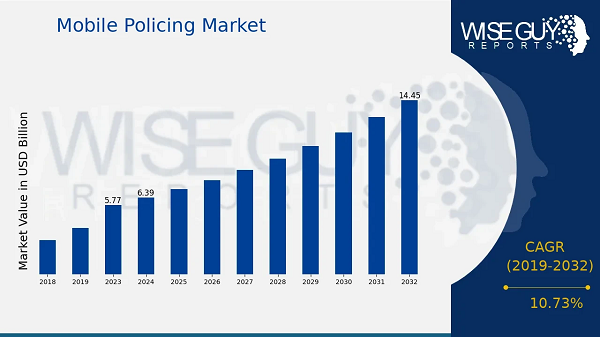The long-term financial health and investment trajectory of the mobile policing sector are best understood through its Compound Annual Growth Rate (CAGR), a metric that provides a smoothed, annualized view of market expansion over a specified period. A thorough review of the Mobile Policing Market CAGR (Compound Annual Growth Rate) demonstrates a sector characterized by strong and consistent double-digit growth, reflecting the deep and structural nature of this technological shift within law enforcement. Unlike volatile year-over-year figures, the CAGR showcases the market's underlying momentum, proving that the adoption of mobile solutions is a sustained, multi-year trend rather than a short-term spending spike. This steady compound growth is underpinned by the fundamental, non-discretionary nature of public safety and the ongoing need for law enforcement agencies to modernize their capabilities. As older, paper-based processes become increasingly untenable, the imperative to invest in digital tools creates a consistent demand that fuels the market's impressive CAGR. As documented in market intelligence briefs from sources like Wise Guy Reports, this predictable growth pattern makes the sector attractive for technology vendors and investors who can confidently forecast future market demand and align their strategic plans accordingly.
The robust CAGR of the mobile policing market is built upon the compounding effect of several interconnected growth drivers. The initial investments in mobile hardware and basic connectivity establish a foundational platform upon which agencies can build. This leads to subsequent, and often larger, investments in a widening array of software applications and data services, each layer of which adds to the market's growth. For example, an agency that first deploys smartphones for communication will later add software for e-citations, then an evidence management platform, followed by an investment in data analytics. This phased adoption model creates a natural, compounding growth cycle. Furthermore, the shift towards Software-as-a-Service (SaaS) subscription models is a significant contributor to the market's stable CAGR. Instead of large, one-time capital expenditures, agencies are entering into multi-year subscription contracts, which provide vendors with predictable, recurring revenue. This recurring revenue forms a solid base that grows each year as new contracts are signed, directly supporting a strong and consistent compound annual growth rate. Geographically, while early adoption in North America and Europe established the initial growth, the subsequent and ongoing adoption in Asia-Pacific and Latin American countries is now adding significant momentum, ensuring the global CAGR remains high.
Looking ahead, the outlook for the mobile policing market's CAGR remains exceptionally positive, with several key trends poised to sustain this long-term growth. The increasing integration of artificial intelligence will be a major factor. AI-powered features, such as natural language processing for voice-based report filing or computer vision for analyzing video feeds, will be offered as premium, high-margin services, adding significant value and driving up average contract sizes. The growing importance of a unified data ecosystem is another critical factor. The need to seamlessly integrate data from mobile devices, body cameras, in-car systems, and stationary sensors will drive sustained investment in sophisticated backend platforms and integration services, further bolstering the CAGR. Moreover, the concept of the "connected officer" is expanding to include health and wellness monitoring through wearables, which can track biometrics and detect if an officer is down. This represents an entirely new product category that will contribute to future market growth. While budgetary pressures on public spending are a potential headwind, the proven return on investment in terms of officer time saved and enhanced public safety outcomes is expected to keep mobile policing as a priority expenditure, ensuring the market maintains its strong and steady CAGR for years to come.
